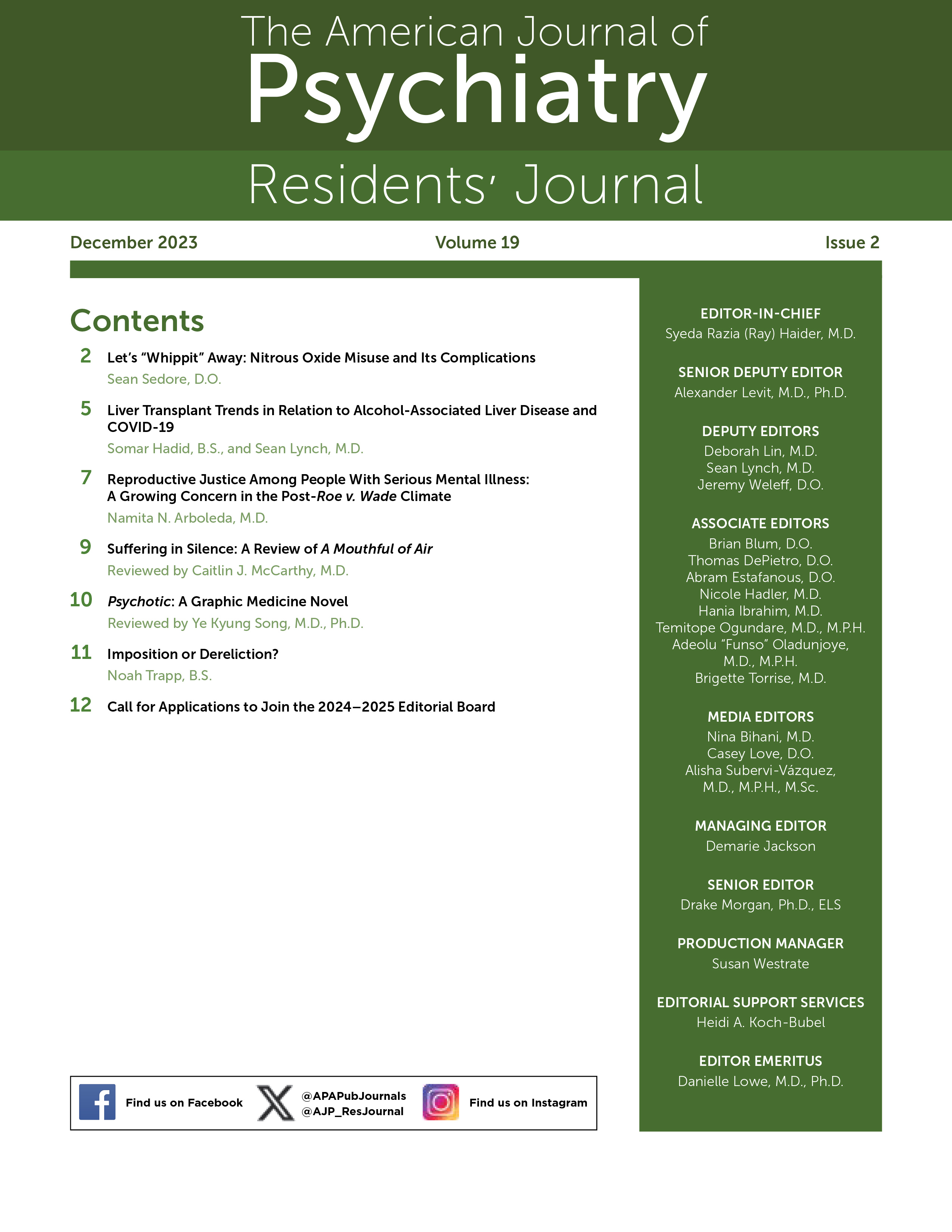The COVID-19 pandemic has had enduring consequences on global public health that will extend beyond its lethal impact on immunocompromised individuals that was observed primarily before widespread vaccination became available. One prominent consequence is the increase in alcohol use, leading to a record rise in alcohol-associated liver disease and transplantations. In 2020, the first year of the pandemic, alcohol sales increased by 2.9%, the largest annual increase in more than 50 years (
1). Studies have also shown that alcohol use due to psychological stressors increased during the pandemic, fueled by factors such as isolation, job and financial concerns, and uncertainty surrounding government responses (
2).
Interestingly, although the pandemic was associated with an overall increase in alcohol consumption, some studies suggest that there was a decrease in the overall number of alcohol users (
3). This decline was offset by an increase in the number of people who reported consuming alcohol more than four times per week, resulting in a net increase in overall alcohol consumption (
3). This shift may be attributed to reduced alcohol consumption among “social drinkers” during lockdowns and increased alcohol use among heavy drinkers (
3). As a result of this disproportionate skew toward heavy drinkers, deaths involving alcohol-associated liver disease reached a record 33,097 people in 2021 (
1).
Alcohol-associated liver disease can progress to decompensated cirrhosis, often necessitating liver transplantation. The incidence of liver transplantations for alcohol-associated liver disease has been steadily on the rise and was accentuated by the pandemic. According to the Scientific Registry of Transplant Recipients, from 2017 to 2021 the percentage of liver transplantations following alcohol-related liver disease diagnoses increased from 25.1% to 39.6%, representing an approximate 53% increase (
4). Coinciding with this trend is the development of effective treatments for hepatitis C, resulting in a decrease in the number of transplant recipients positive for hepatitis C virus. Over the same time frame, the percentage of liver transplantations in which hepatitis C was implicated decreased from 13.4% in 2017 to 5.0% in 2021, representing a 62% decrease (
4).
It is also noteworthy that this surge in liver transplantations correlated with the ongoing decades-long opioid epidemic in the United States (
5). In a retrospective analysis of liver transplant donors spanning from 2002 to 2017, Yoeli et al. used the United Network for Organ Sharing database and found that the number of drug overdose donors among adults increased from 2% of adult liver transplants in 2002 to 15% in 2017 (
5). A growing number of these drug overdose donors succumbed to opioid abuse but were young and otherwise healthy. Additionally, recipients of transplants from either drug overdose donors or non–drug overdose donors tended to have equivalent outcomes in terms of patient and graft survival (
5). Therefore, the number of opioid-related deaths, which has trended upward and also spiked upward during the COVID-19 pandemic, has led to the bitter fruit of more donors for transplant recipients.
In summary, the COVID-19 pandemic exacerbated long-standing trends of increased alcohol use and the opioid epidemic. Although record numbers of transplantations year after year are an indication of success, it is tragic that these record numbers have been possible, in part, because of an increased number of donors who died in the context of an opioid epidemic. Meanwhile, better treatment options have contributed to the decrease in the number of recipients requiring a transplant because of hepatitis C. However, studies reliant on observational data and trends are limited because they do not establish causation or fully account for potential confounding factors. Therefore, additional comprehensive analyses are needed to understand the underlying causes of the observed trends.
Acknowledgments
The authors thank Lidia Klepacz, M.D., and Stephen J. Ferrando, M.D., at Westchester Medical Center and New York Medical College, Valhalla, for editorial support in the writing of this commentary.
